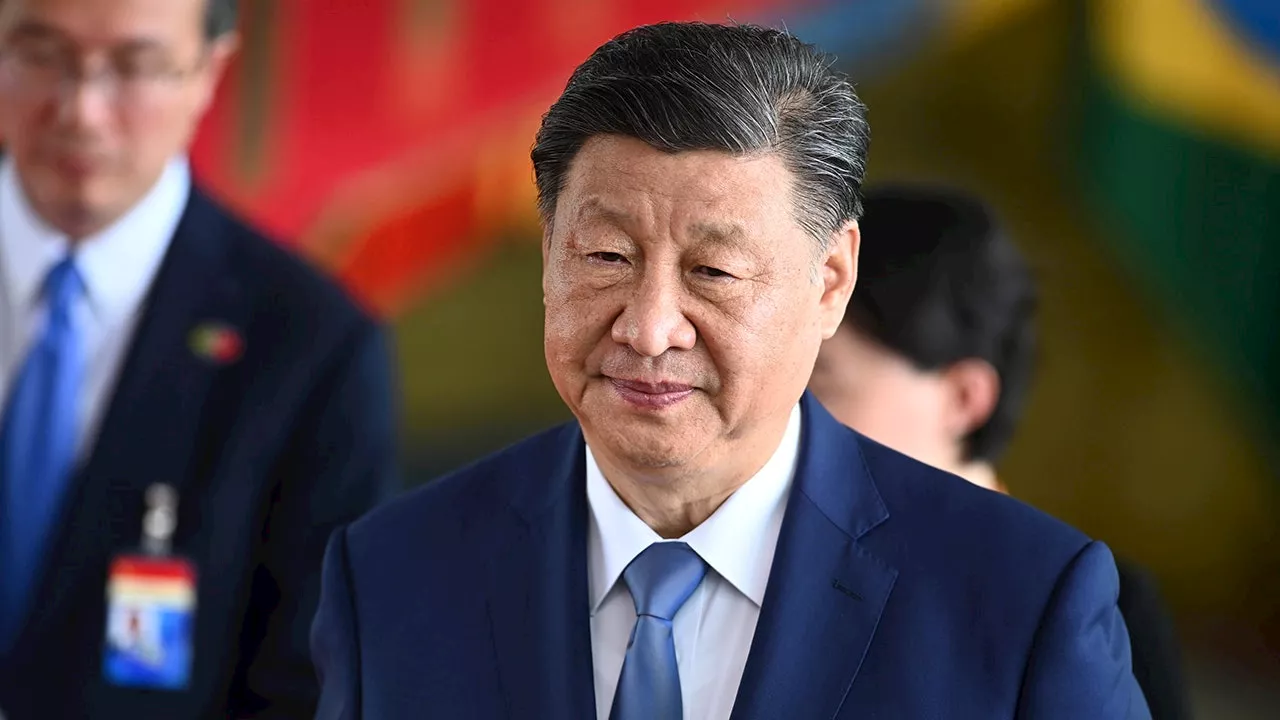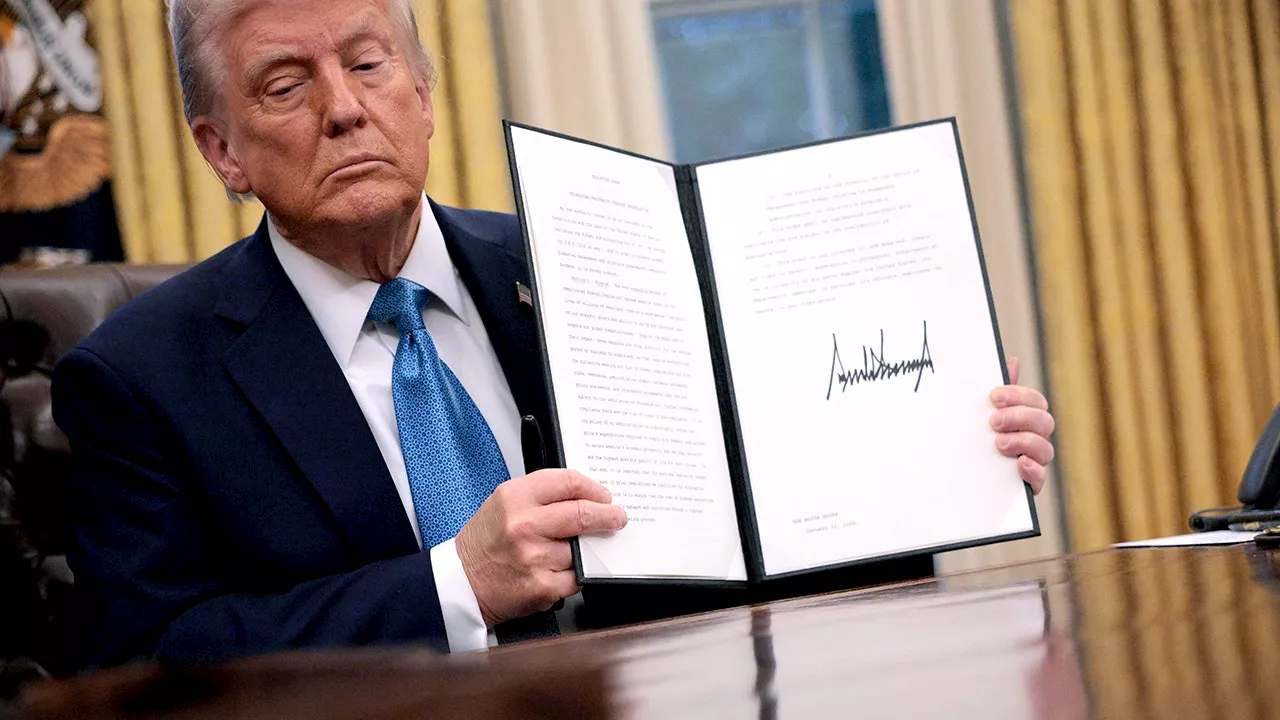President Trump's imposition of tariffs on key trading partners sparks debate about the implications for consumers and the global economy.
President Donald Trump's actions to implement or threaten higher tariffs on countries like China, Canada , and Mexico – America's three largest trading partners – have sparked inquiries about the nature of tariffs and their effects on consumers. Trump signed executive orders last weekend to impose a 25% tariff on imports from Canada and Mexico, with a lower 10% tariff rate applied to Canadian energy products.
These tariffs were postponed for at least one month after Canada and Mexico announced measures to combat drug trafficking and illegal immigration along their borders with the U.S. He also raised tariffs on goods imported from China by 10% across the board. These tariffs came into effect on February 4th, and the Chinese government responded with retaliatory tariffs on certain U.S. energy exports and took other punitive measures, including an antitrust investigation of Google and restrictions on exports of rare earth minerals. Tariffs are taxes levied on imported goods and services. While they historically played a more prominent role in contributing to federal tax revenue, developed countries have shifted away from relying on tariffs as a primary source of funding and have turned to other forms of taxation – such as income, payroll, or sales taxes.After World War II, the global trading system transitioned to a rules-based framework for tariffs initially established under the General Agreement on Tariffs and Trade (GATT) in 1947, which later became part of the World Trade Organization (WTO) in 1995, according to the Congressional Research Service. The system established by GATT and the WTO created rules governing how countries can utilize tariffs on trading partners, as well as mechanisms for resolving disputes and preventing trade wars – situations where countries engage in a cycle of imposing retaliatory tariffs on each other. This system has contributed to a decline in global tariff rates and an expansion of markets for U.S. exporters. As the CRS noted, U.S. exports have surged by more than 160% adjusted for inflation since the WTO's establishment.Companies that import products subject to tariffs pay the tariff when those goods enter the importing country. In the U.S., tariffs are collected by the Customs and Border Protection (CBP) agency, a subagency of the Department of Homeland Security. Trump has proposed creating an 'External Revenue Service' responsible for collecting tariffs, although it remains unclear whether this plan will progress. Tariffs elevate the price of a product for the importing company, which then must decide whether to raise prices paid by consumers to preserve their profit margins or absorb the tariff's cost, potentially affecting their bottom line. In certain cases, the exporting company might attempt to maintain its market share by lowering prices to assist importers in coping with the tariff's cost – though their willingness to do so depends on the demand for the product affected by the tariff.'It truly depends on the price sensitivity of the product,' Brandon Parsons, an economist at Pepperdine University's Graziadio Business School, explained to FOX Business in an interview. 'For a producer that has significant leverage – consumers genuinely desire their product, and there is inelastic demand, like for example, the iPhone – they're capable of simply increasing the price, and consumers will still purchase it, and the iPhone maintains its market share,' Parsons stated. 'Other products where consumers are more price-sensitive and there are numerous substitutes, along with intense competition, then it could be that producers will merely reduce their margins. So, they'll keep prices steady to avoid losing market share, demand, but essentially absorb a portion of the tariff's cost, leading to a decline in their overall profitability,' he added.
TRUMP TARIFFS CHINA CANADA MEXICO TRADE WARS GLOBAL ECONOMY CONSUMERS IMPORT REVENUE
United States Latest News, United States Headlines
Similar News:You can also read news stories similar to this one that we have collected from other news sources.
 Trump Tariffs Live Updates: 10% Tariffs On China Goes Into Effect As Beijing Outlines Retaliation PlanEconomists have broadly predicted Trump’s tariffs will raise prices and harm the economy.
Trump Tariffs Live Updates: 10% Tariffs On China Goes Into Effect As Beijing Outlines Retaliation PlanEconomists have broadly predicted Trump’s tariffs will raise prices and harm the economy.
Read more »
 China responds with tariffs on US goods after Trump's tariffs on Chinese imports take effectChina imposed tariffs on some U.S. imports in response to new tariffs President Donald Trump put on Chinese goods beginning shortly after midnight on Tuesday.
China responds with tariffs on US goods after Trump's tariffs on Chinese imports take effectChina imposed tariffs on some U.S. imports in response to new tariffs President Donald Trump put on Chinese goods beginning shortly after midnight on Tuesday.
Read more »
 Trump's Tariffs on China Spark Retaliation, Mexico-Canada Tariffs DelayedPresident Trump imposed tariffs on Chinese goods, triggering immediate retaliatory measures from China. Tariffs on Mexico and Canada have been temporarily postponed to allow for further trade and border security talks.
Trump's Tariffs on China Spark Retaliation, Mexico-Canada Tariffs DelayedPresident Trump imposed tariffs on Chinese goods, triggering immediate retaliatory measures from China. Tariffs on Mexico and Canada have been temporarily postponed to allow for further trade and border security talks.
Read more »
 China imposes 15% tariffs on coal, LNG in response to Trump's tariffsChina has announced retaliatory tariffs on select American imports and an antitrust investigation into Google, just minutes after a sweeping levy on Chinese products imposed by U.S. President Donald Trump took effect. This isn’t the first round of tit-for-tat actions between the two countries. China and the U.S.
China imposes 15% tariffs on coal, LNG in response to Trump's tariffsChina has announced retaliatory tariffs on select American imports and an antitrust investigation into Google, just minutes after a sweeping levy on Chinese products imposed by U.S. President Donald Trump took effect. This isn’t the first round of tit-for-tat actions between the two countries. China and the U.S.
Read more »
 Trump tariffs: What do Trump’s executive orders say on tariffs and how would they work?President Donald Trump is using a trio of executive orders to throw the world economy and his own goal of cutting inflation into turmoil.
Trump tariffs: What do Trump’s executive orders say on tariffs and how would they work?President Donald Trump is using a trio of executive orders to throw the world economy and his own goal of cutting inflation into turmoil.
Read more »
 Trump's tariffs could cause US layoffs, experts say. Here are the jobs at riskPresident Donald Trump has proposed 25% tariffs on Canada and Mexico, and 10% tariffs on China.
Trump's tariffs could cause US layoffs, experts say. Here are the jobs at riskPresident Donald Trump has proposed 25% tariffs on Canada and Mexico, and 10% tariffs on China.
Read more »
